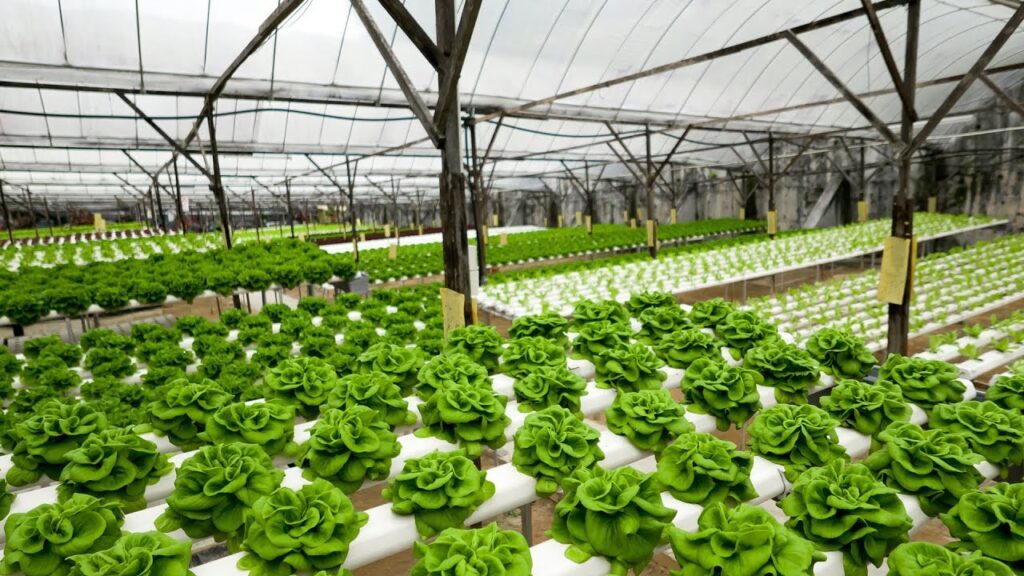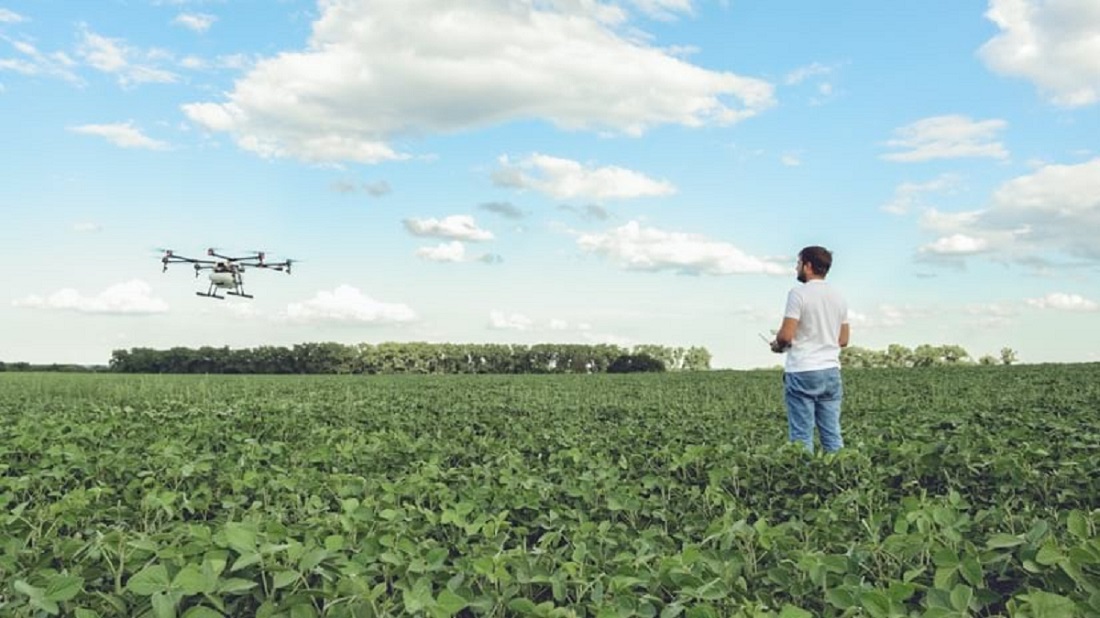How Did The Agricultural Revolution Lead To The Industrial Revolution
The Industrial Revolution, brought about by quick advances in technology, production, and societal organization, was one of the most revolutionary periods in human history. Its remarkable transformation, which began in the late 18th century and continued into the 19th century, saw the emergence of new technologies, factories, and urbanization. Modern industrial civilizations have emerged due to industrial growth, substantially altering how people lived and worked. While many factors contributed to the Industrial Revolution, the Agricultural Revolution was one of the critical catalysts. In the past, agriculture workers worked in the fields from sun up to sun down to grow crops. So they need advanced equipment that keeps them. With time, the demands and needs of agricultural workers changed and made industries produce equipment that could save time and effort.
This article will explore how the Agricultural Revolution laid the foundation for the Industrial Revolution.
The Agricultural Revolution: A Paradigm Shift

The Agricultural Revolution, often called the Neolithic Revolution, was a pivotal turning point in human history. It began approximately 10,000 years ago when humans transitioned from a nomadic, hunter-gatherer lifestyle to one based on agriculture and settled farming. Some vital developments that characterized this shift are as follows:
- Enclosure Movement: In England, the Enclosure Movement saw the privatization and consolidation of common lands into larger, privately owned farms. It allowed landowners to implement advanced agricultural techniques and increased agricultural productivity.
- Domestication of Plants and Animals: Early humans learned to cultivate and selectively breed plants such as wheat, barley, and rice, as well as animals like cattle, sheep, and goats. It provided a stable source of food and raw materials.
- Sedentary Lifestyle: As farming became more productive, people settled in one place, creating permanent villages and towns. It led to the development of permanent dwellings and the concept of land ownership.
- Surplus Food Production: Agriculture allowed for the production of surplus food beyond immediate consumption. This surplus could be stored for future use or traded, leading to the emergence of complex economic systems.
- Specialization and Division of Labor: With the ability to produce more than just food, societies saw the emergence of specialized roles and division of labor. Some individuals could focus on non-food-related tasks like pottery, tool-making, and construction.
- Innovations in Farming Equipment: The development of new farming tools and machinery, such as the seed drill and the plow, significantly increased efficiency and reduced the labor required for farming.
- Crop Rotation and Selective Breeding: Farmers began to adopt crop rotation systems that improved soil fertility and reduced the likelihood of crop failures. Additionally, selective breeding of livestock led to more robust and productive animals.
- Introduction of New Crops: The exchange of crops between the Old World and the New World, known as the Columbian Exchange, introduced new crops like maize, potatoes, and tobacco to Europe, expanding agricultural diversity and output.
- Population Growth: The increased food supply from agriculture led to population growth, creating the need for more advanced organizational structures and societal institutions.
The Relation Between Agricultural and Industrial Revolution
The connection between the Agricultural Revolution and the Industrial Revolution may not be immediately apparent, but several key factors illustrate how the former set the stage for the latter:
- Surplus Labor: Agriculture’s efficiency allowed a significant portion of the population to engage in activities other than food production. This surplus labor force could be redirected toward industrial activities.
- Urban Centers: Growing towns and cities due to agriculture created population centers where industrialization could take root. Urban areas became hubs of trade, commerce, and manufacturing.
- Capital Accumulation: The Agricultural Revolution laid the foundation for capital accumulation, as surplus food and resources could be used to invest in industrial enterprises.
- Technological Innovation: The development of tools and techniques in agriculture, such as improved plows and crop rotation, set the stage for the later innovations in machinery and manufacturing processes during the Industrial Revolution.
- Transportation Infrastructure: The need to transport agricultural goods to markets spurred transportation infrastructure development, including roads, canals, and, later, railways. These networks facilitated the movement of raw materials and finished products during the Industrial Revolution.
- Change in Mindset: The Agricultural Revolution fostered a mindset of progress and innovation as humans continually sought ways to improve food production. This mindset carried over into the industrial era, driving innovation and technological advancements.
Impact of the Agricultural Revolution on Society
The Agricultural Revolution had profound and far-reaching consequences for human society:
- Social Structure: Social hierarchies began to form with the development of surplus food and specialization. A clear division between rulers, warriors, artisans, and farmers emerged.
- Urbanization: Settlements grew into towns and cities as agriculture allowed more people to live closely together. This urbanization laid the groundwork for the development of trade, markets, and economic exchange.
- Technological Advancements: Agriculture spurred technological innovation. Plows, irrigation systems, and crop rotation techniques improved agricultural productivity.
- Accumulation of Wealth: Surplus production led to wealth accumulation, which was used to fund public projects, infrastructure, and the growth of early civilizations.
- Labor Force Expansion: The shift from agriculture to industry required a growing labor force. The surplus population from the countryside provided the workforce needed for factories and manufacturing.
How the Industrial Revolution Plays a Role In Agricultural Progress
The Industrial Revolution, which began in the late 18th century, was characterized by the rapid mechanization of production processes. It was made possible, in part, by the advancements and changes brought about by the Agricultural Revolution:
- Mechanization: The experience gained from designing and building farming machinery, such as the seed drill and the spinning jenny, paved the way for creating more advanced industrial machines. These machines were instrumental in increasing production in textile factories, mines, and other industries.
- Workforce Availability: The migration of people from rural areas to urban centers during the Agricultural Revolution provided a ready labor force for the burgeoning industrial sector. This urban workforce was essential for staffing factories and driving industrial production.
- Capital Investment: The wealth accumulated by landowners and agricultural entrepreneurs during the Agricultural Revolution could be invested in new industrial ventures. Capital flowed into industries like textiles, iron and steel production, and coal mining, spurring further industrial growth.
- Technological Progress: The Agricultural Revolution fostered a culture of innovation and technological advancement. This mindset carried over into the Industrial Revolution, where inventors and entrepreneurs sought new ways to increase productivity and efficiency.
Conclusion
In conclusion, the Agricultural Revolution was a pivotal moment in human history that set the stage for the subsequent Industrial Revolution. By increasing agricultural productivity, creating surplus labor, fostering urbanization, and encouraging technological innovation, the Agricultural Revolution laid the essential groundwork for the rapid industrialization that followed. The shift from agrarian societies to industrial powerhouses marked a profound transformation in how people lived and worked, ultimately shaping the modern world we know today. The interconnectedness of these two revolutions highlights the critical role of progress and innovation in shaping the course of human civilization.
FAQs
The Agricultural Revolution, known as the Neolithic Revolution, began around 10,000 years ago. It marked the transition from nomadic, hunter-gatherer societies to settled farming communities.
Some crucial developments included the domestication of plants and animals, crop rotation, enclosure movement, and the introduction of new crops and farming equipment.
The Agricultural Revolution created surplus food, allowing a significant part of the population to move away from agriculture and engage in industrial activities. It also spurred urbanization, capital accumulation, and technological innovation, essential for industrialization.
Surplus labor resulted from the increased efficiency of agriculture, which enabled a portion of the population to work in industries and factories, driving the Industrial Revolution’s workforce.
The agricultural revolution led to the growth of towns and cities as people moved from rural areas to urban centers in search of industrial employment and trade opportunities.
Surplus food production led to the development of social hierarchies, as specialization emerged with roles such as rulers, warriors, artisans, and farmers.
The Agricultural Revolution led to the development of tools and techniques like plows, irrigation systems, and crop rotation, which improved agricultural productivity.
The Industrial Revolution benefited from the experience of designing and building farming machinery during the Agricultural Revolution. It also utilized the surplus labor force and capital accumulation from agricultural advancements.
Understanding this relationship helps us comprehend how advancements in agriculture, societal changes, and technological innovation are interconnected and have shaped the modern world.
The lasting impacts include the shift from agricultural to industrial societies, urbanization, technological innovation, and the foundation of modern economic systems and infrastructure. These revolutions laid the groundwork for the modern world’s economic and technological landscape.



